Have you heard of Lazio’s dying town? Located a couple of hours north of Rome in the under-the-radar region of Tuscia, Civita di Bagnoregio rises on a bluff and looks almost like an island surrounded by a valley. I recently included it in a list of Italy’s most charming small towns for AFAR, but I think it warrants a closer look.
Curious to see the mysterious town, my husband Marco and I took a day trip there on a chilly day in November. Civita di Bagnoregio is designated one of the Borghi più belli d’Italia (most beautiful villages in Italy) and as you approach it, you start to understand why. The historic part of town is connected to the newer part of town by a nearly 1,000-foot pedestrian bridge. From the Belvedere in the new part of town, we caught our first glimpse of the historic part of town with its old stone buildings dramatically perched on a plateau.
Over the course of centuries, erosion has slowly worn away at the plateau, leaving it—and the buildings on top of it—at risk of collapse. Some sources say that it will eventually erode itself out of existence, hence the moniker of the dying town. Other sources attribute the nickname to the town’s dwindling population.
According to Italy Magazine, there are only 12 year-round residents, though that number swells to about a hundred in the summer. (Imagine lugging your groceries up that steep pedestrian bridge and it’ll be easy to understand why so few people live there!) As a visitor, you have to pay €5 to enter the town, which goes toward its conservation.
It was definitely quiet on the day we were there, but despite the minuscule population, it doesn’t feel like a ghost town. There are some cute restaurants, boutiques selling things like locally made ceramics or soaps and lotions, and a church on the main piazza. Marco and I wandered around the town for a while before our lunch reservation, admiring the old stone houses with their flower boxes and observing some local cats. We peeked into an agriturismo with an old stone mill for pressing olive oil, but it was closed.
On the recommendation of my colleague Elizabeth Heath, an Umbria-based journalist who recently launched Villaggio Tours, I booked us a table for lunch at Osteria al Forno di Agnese, a rustic family-run restaurant opened in 1968 with a vine-covered patio that’s no doubt lovely in the spring and summer. The small interior dining room was full, mostly with Italians, with the exception of a Spanish-speaking couple.
We shared the antipasto misto, which came with local cheeses, cured meats, and bruschette. Then I had fresh pici pasta with black truffle and Marco had pappardelle with white ragù. The house red wine was Sangiovese, which paired well with our meal. We capped it off with a slice of apple cake.
There’s not much to do in the town, per se. It’s more about walking around, enjoying a leisurely lunch, and taking some time to slow down and see this traditional hill town. You could do it as a day trip from Rome, as we did, combine it with another town in Tuscia, or stop there on the way to Umbria.
It’s only half an hour from Orvieto, one of Umbria’s loveliest Medieval hill towns, or forty minutes from Bomarzo, where you can visit the Sacro Bosco di Bomarzo, a Mannerist sculpture park full of larger-than-life statues of monsters and mythological creatures hewn from the rock. You could easily visit Civita di Bagnoregio and the Sacro Bosco in a day.
There’s no train service to Civita di Bagnoregio, so the best way to get there is by car. Otherwise you would have to take a train to Viterbo or Orvieto and then transfer to a COTRAL bus. Or if you join one of Villaggio Tours’ immersive trips in Umbria, Liz will bring you there.
So is it worth making the trek to see the Dying Town? It depends. If you have a limited time in Rome, probably not, but if you’ve seen the main attractions and want to trade the bustling city for a day in a charming little hill town, Civita di Bagnoregio is a good option.
Further Reading
Read more about Civita di Bagnoregio and some of the other Borghi più belli d’Italia in my aforementioned piece about 12 Small Towns in Italy That Look Like Storybook Villages for AFAR.
The Italy Magazine piece about Civita di Bagnoregio that I referenced above is here.
Some of the nearby towns I mentioned, including Orvieto and Bomarzo, are included in my very subjective list of the best day trips from Rome.
Want to learn more about what else to do in the area? I wrote about Tuscia in this article for Hemispheres and this feature for Fodor’s.
See all of the New Roman Times’ issues about under-the-radar destinations here.


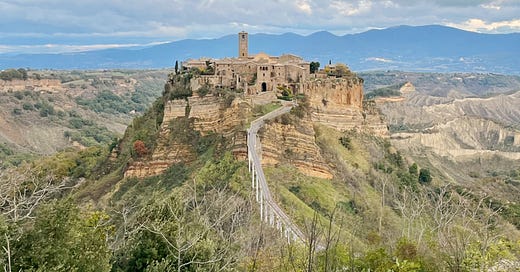



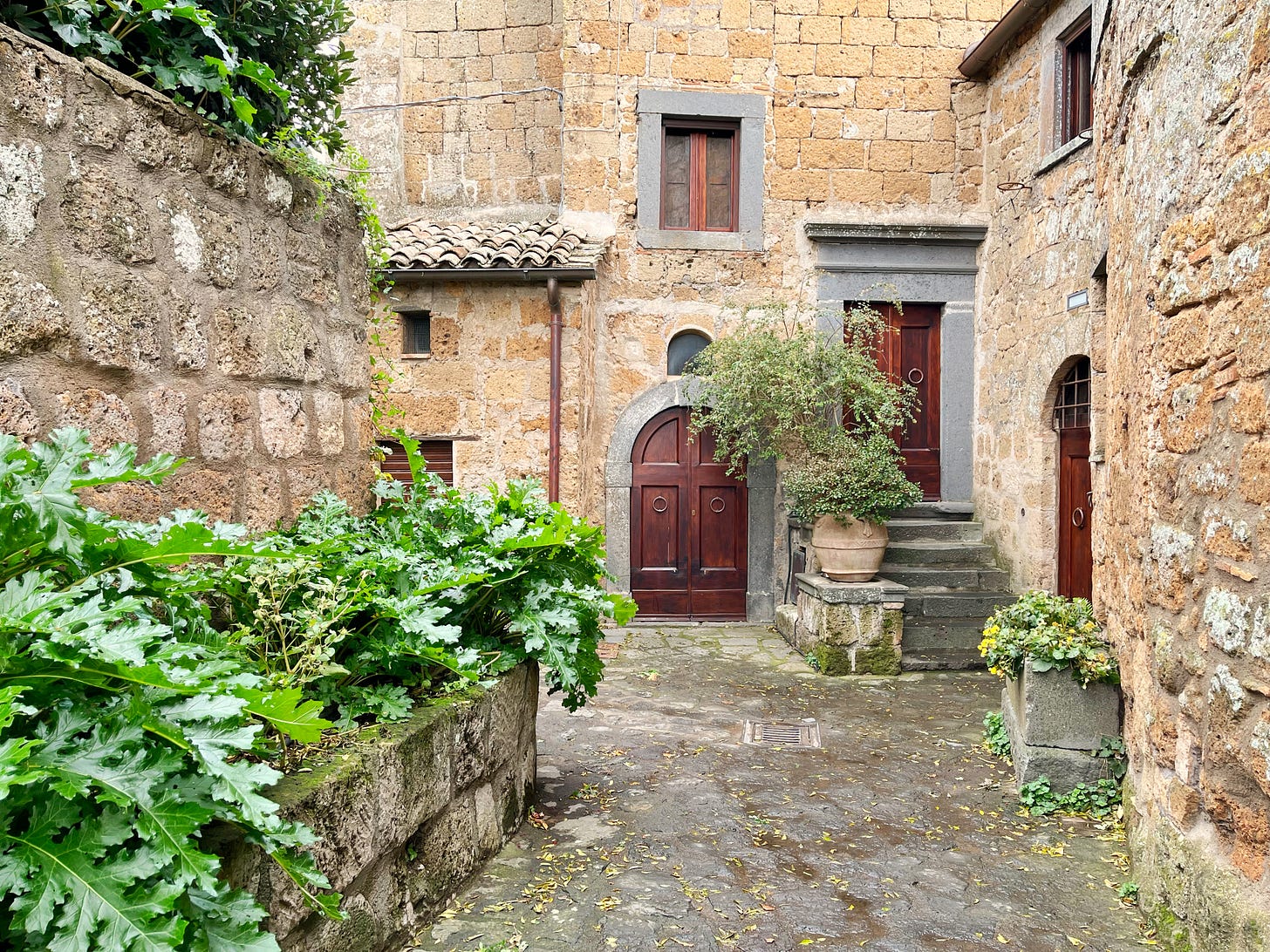
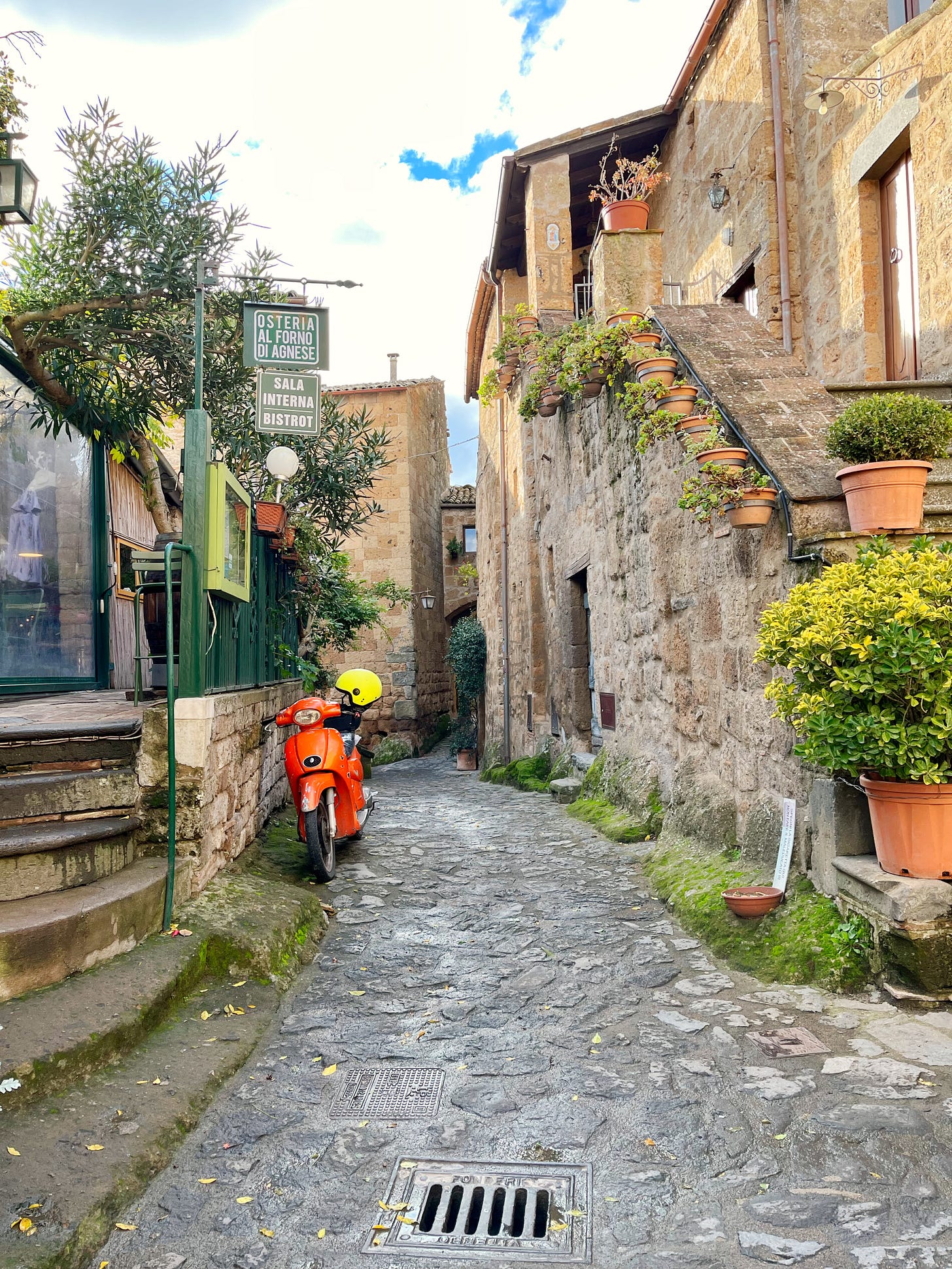
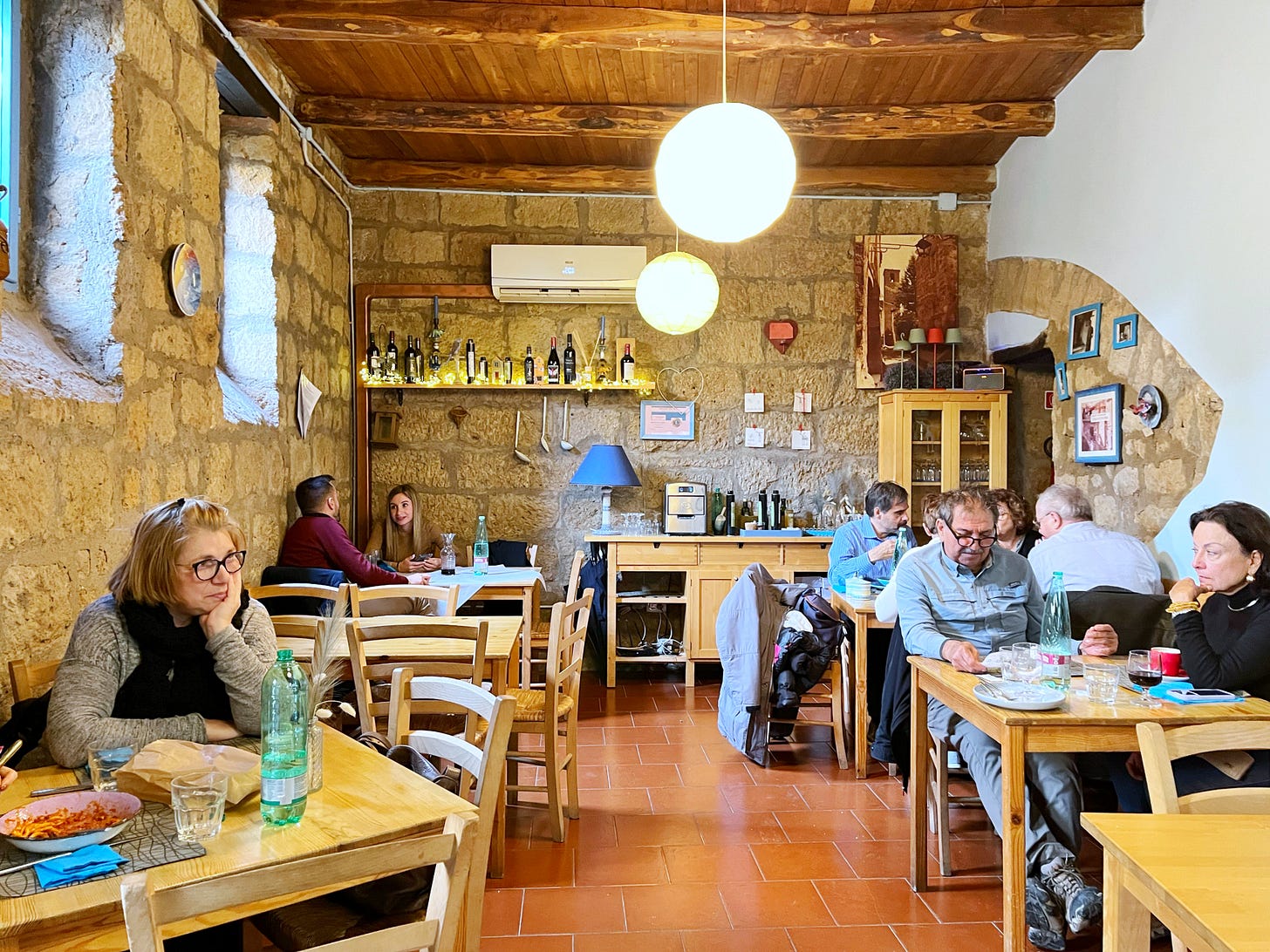
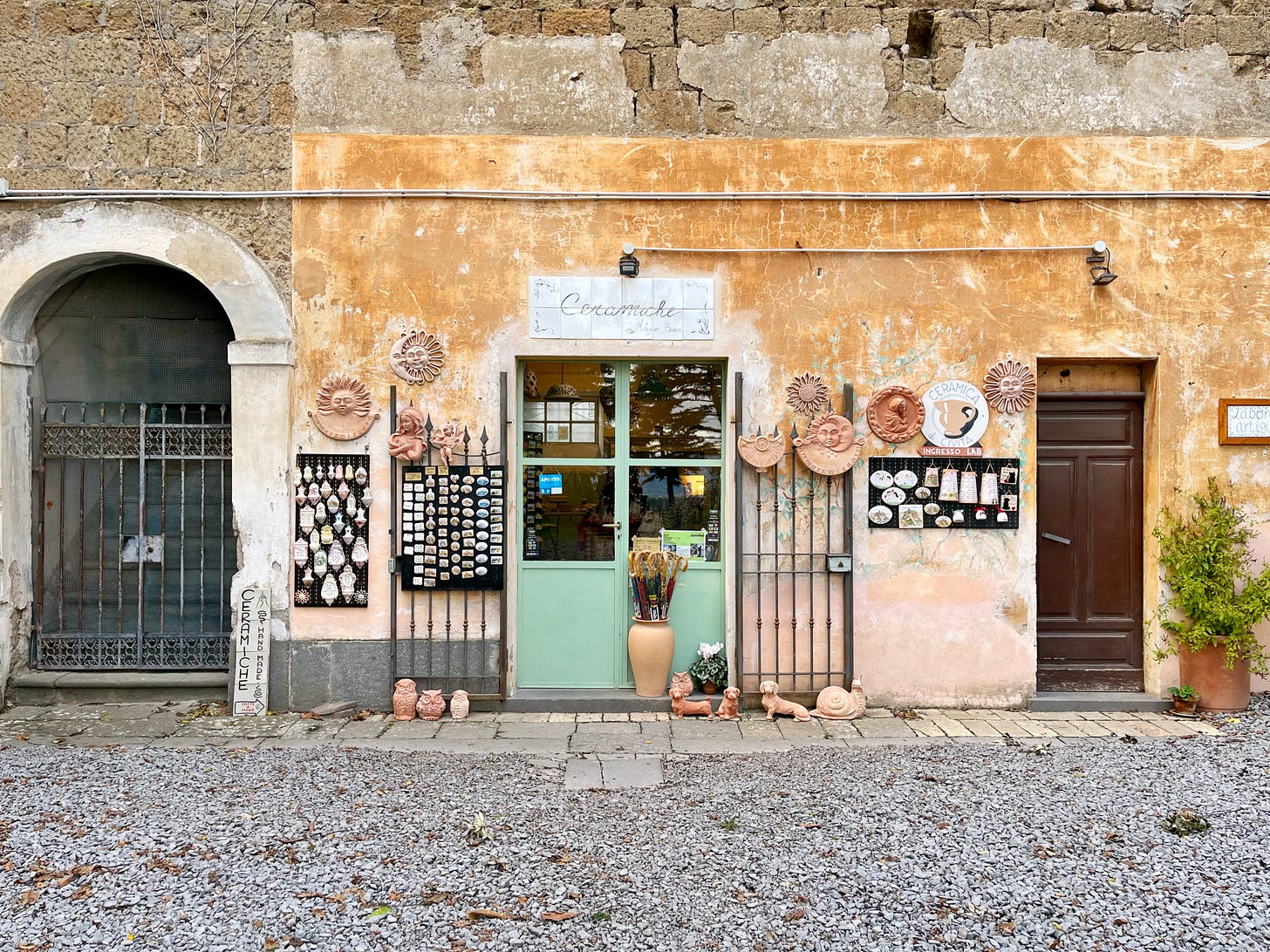
I love this town. Even by elevated Italian standards, it takes an amazing photo. And that little shop in the square that sells soaps makes an amazing goat milk skin lotion! So glad you highlighted this place (before it melts away)!
I am really hoping to visit Civita di Bagnoregio in 2025. It's been on my radar for a couple years. Thank you for writing this piece about it! I would love to learn about more under-the-radar towns.